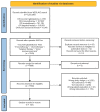Recurrent Glioblastoma Treatment: State of the Art and Future Perspectives in the Precision Medicine Era
- PMID: 36009473
- PMCID: PMC9405902
- DOI: 10.3390/biomedicines10081927
Recurrent Glioblastoma Treatment: State of the Art and Future Perspectives in the Precision Medicine Era
Abstract
Current treatment guidelines for the management of recurrent glioblastoma (rGBM) are far from definitive, and the prognosis remains dismal. Despite recent advancements in the pharmacological and surgical fields, numerous doubts persist concerning the optimal strategy that clinicians should adopt for patients who fail the first lines of treatment and present signs of progressive disease. With most recurrences being located within the margins of the previously resected lesion, a comprehensive molecular and genetic profiling of rGBM revealed substantial differences compared with newly diagnosed disease. In the present comprehensive review, we sought to examine the current treatment guidelines and the new perspectives that polarize the field of neuro-oncology, strictly focusing on progressive disease. For this purpose, updated PRISMA guidelines were followed to search for pivotal studies and clinical trials published in the last five years. A total of 125 articles discussing locoregional management, radiotherapy, chemotherapy, and immunotherapy strategies were included in our analysis, and salient findings were critically summarized. In addition, an in-depth description of the molecular profile of rGBM and its distinctive characteristics is provided. Finally, we integrate the above-mentioned evidence with the current guidelines published by international societies, including AANS/CNS, EANO, AIOM, and NCCN.
Keywords: brain tumor; chemotherapy; clinical trial; glioblastoma treatment; immunotherapy; molecular profile; recurrent glioblastoma; regorafenib; review; target therapy.
Conflict of interest statement
The authors declare no conflict of interest.
Figures
Similar articles
-
Tumor treating fields for the treatment of glioblastoma: Current understanding and future perspectives.Surg Neurol Int. 2023 Nov 10;14:394. doi: 10.25259/SNI_674_2023. eCollection 2023. Surg Neurol Int. 2023. PMID: 38053701 Free PMC article. Review.
-
The future of Cochrane Neonatal.Early Hum Dev. 2020 Nov;150:105191. doi: 10.1016/j.earlhumdev.2020.105191. Epub 2020 Sep 12. Early Hum Dev. 2020. PMID: 33036834
-
How We Treat Recurrent Glioblastoma Today and Current Evidence.Curr Oncol Rep. 2019 Oct 12;21(10):94. doi: 10.1007/s11912-019-0834-y. Curr Oncol Rep. 2019. PMID: 31606796 Review.
-
Re-irradiation after gross total resection of recurrent glioblastoma : Spatial pattern of recurrence and a review of the literature as a basis for target volume definition.Strahlenther Onkol. 2017 Nov;193(11):897-909. doi: 10.1007/s00066-017-1161-6. Epub 2017 Jun 14. Strahlenther Onkol. 2017. PMID: 28616821 English.
-
Management of glioblastoma: State of the art and future directions.CA Cancer J Clin. 2020 Jul;70(4):299-312. doi: 10.3322/caac.21613. Epub 2020 Jun 1. CA Cancer J Clin. 2020. PMID: 32478924 Review.
Cited by
-
Tumor treating fields for the treatment of glioblastoma: Current understanding and future perspectives.Surg Neurol Int. 2023 Nov 10;14:394. doi: 10.25259/SNI_674_2023. eCollection 2023. Surg Neurol Int. 2023. PMID: 38053701 Free PMC article. Review.
-
Fotemustine in recurrent high‑grade glioma: MRI neuro‑radiological findings.Oncol Lett. 2024 Sep 27;28(6):570. doi: 10.3892/ol.2024.14703. eCollection 2024 Dec. Oncol Lett. 2024. PMID: 39390978 Free PMC article.
-
Efficacy and indications of gamma knife radiosurgery for recurrent low-and high-grade glioma.BMC Cancer. 2024 Jan 5;24(1):37. doi: 10.1186/s12885-023-11772-8. BMC Cancer. 2024. PMID: 38183008 Free PMC article.
-
Effects of Reoperation Timing on Survival among Recurrent Glioblastoma Patients: A Retrospective Multicentric Descriptive Study.Cancers (Basel). 2023 Apr 28;15(9):2530. doi: 10.3390/cancers15092530. Cancers (Basel). 2023. PMID: 37173996 Free PMC article.
-
Proteasome Inhibitors against Glioblastoma-Overview of Molecular Mechanisms of Cytotoxicity, Progress in Clinical Trials, and Perspective for Use in Personalized Medicine.Curr Oncol. 2023 Nov 2;30(11):9676-9688. doi: 10.3390/curroncol30110702. Curr Oncol. 2023. PMID: 37999122 Free PMC article. Review.
References
-
- Allemani C., Matsuda T., Di Carlo V., Harewood R., Matz M., Nikšić M., Bonaventure A., Valkov M., Johnson C.J., Estève J., et al. Global surveillance of trends in cancer survival 2000-14 (CONCORD-3): Analysis of individual records for 37,513,025 patients diagnosed with one of 18 cancers from 322 population-based registries in 71 countries. Lancet. 2018;391:1023–1075. doi: 10.1016/S0140-6736(17)33326-3. - DOI - PMC - PubMed
-
- Stupp R., Hegi M.E., Mason W.P., van den Bent M.J., Taphoorn M.J.B., Janzer R.C., Ludwin S.K., Allgeier A., Fisher B., Belanger K., et al. Effects of radiotherapy with concomitant and adjuvant temozolomide versus radiotherapy alone on survival in glioblastoma in a randomised phase III study: 5-year analysis of the EORTC-NCIC trial. Lancet Oncol. 2009;10:459–466. doi: 10.1016/S1470-2045(09)70025-7. - DOI - PubMed
-
- National Comprehensive Cancer Network. [(accessed on 27 March 2022)]. Available online: https://www.nccn.org/
Publication types
Grants and funding
LinkOut - more resources
Full Text Sources



